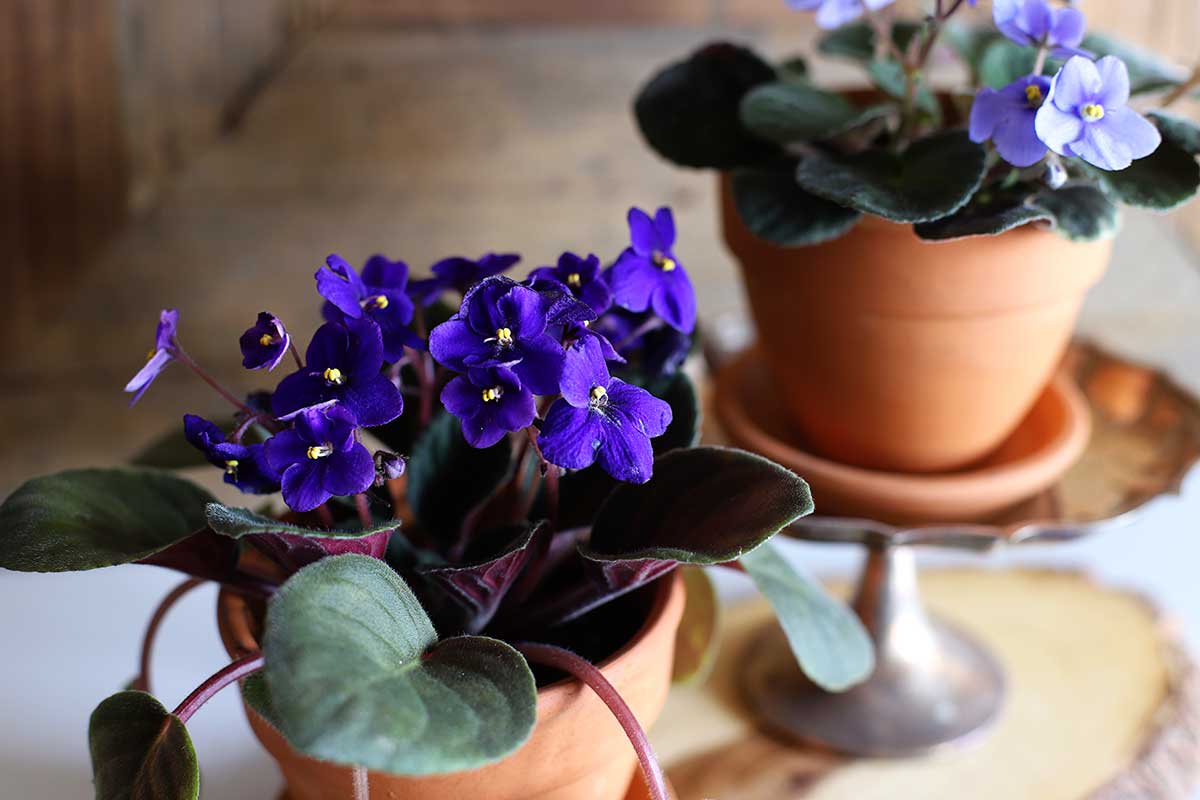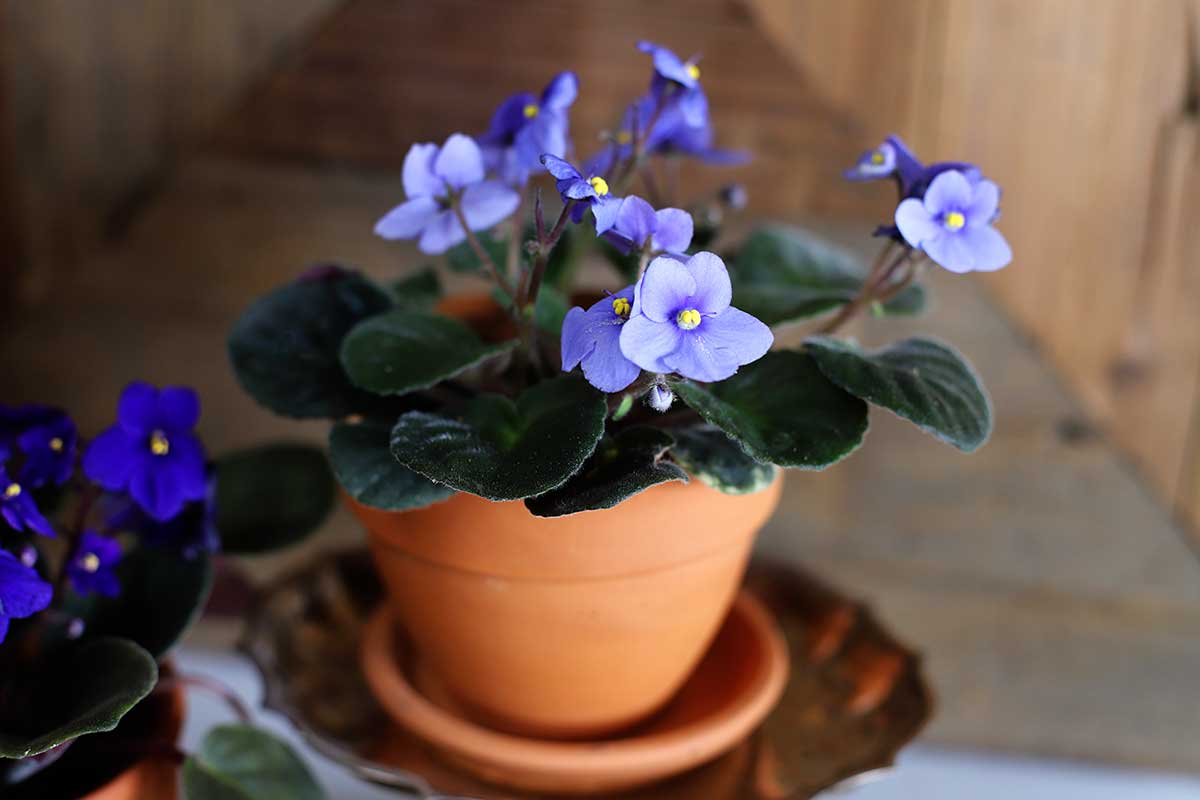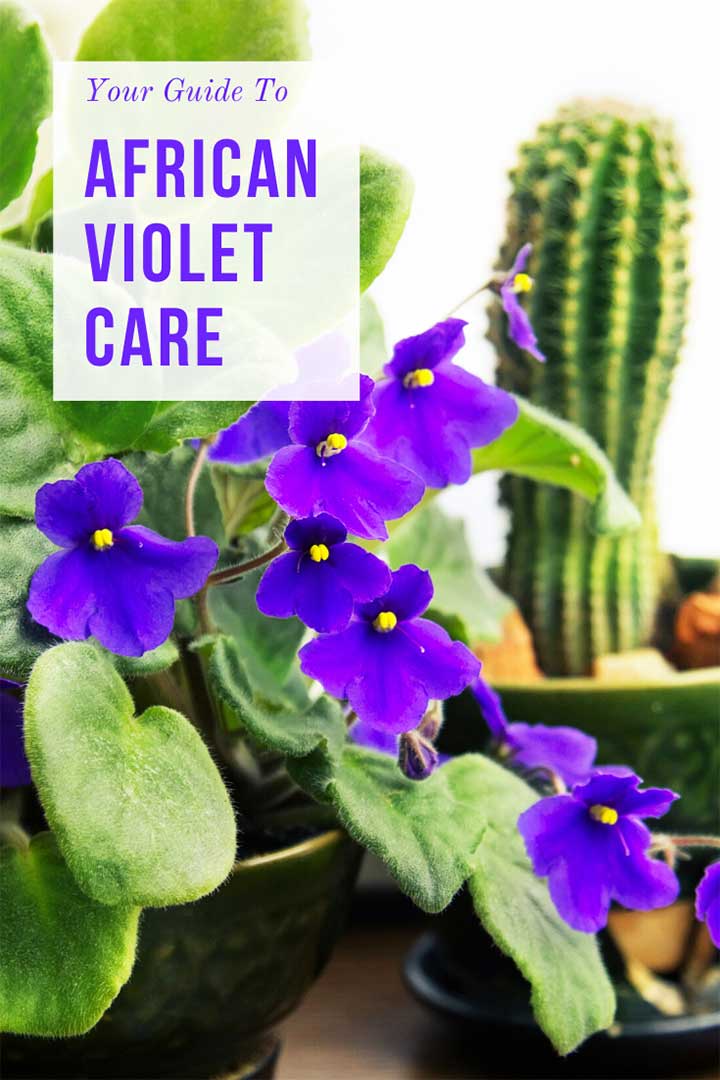African violets are gorgeous flowering plants that can add a pop of color to any indoor space. With their bright blooms and velvety leaves, it’s no wonder they are one of the most popular houseplants. Caring for an African violet properly will ensure your plant thrives for years to come.
When grown in the right conditions, African violets will reward you with vibrant flowers and lush foliage. Read on to learn everything you need to know about successfully growing these stunning plants in pots indoors.
Choosing the Right Pot for Your African Violet
Picking the perfect pot is one of the most important steps to growing happy, healthy African violets. Here are some key factors to consider when selecting a container:
-
Drainage – Excellent drainage is critical. Choose a pot with multiple drainage holes to prevent soggy soil. Self-watering pots work very well.
-
Size – Opt for a snug pot, around 1/3 the size of the plant. African violets thrive when slightly root-bound.
-
Material – Plastic, ceramic, and glass pots all work well. Self-watering plastic pots are affordable and effective.
-
Shape – Round or square pots allow for even water distribution. Avoid tall, narrow pots.
Many garden centers sell pots specifically designed for African violets. Self-watering pots are highly recommended, as they make care easier and prevent overwatering issues.
The Right Soil Mix
In addition to the perfect pot, African violets need a well-draining, lightweight growing medium. A quality potting mix formulated for African violets is best
Here’s what to look for in soil:
- A blend of peat moss, perlite, vermiculite for moisture retention and aeration
- Low in salts and nutrients to prevent fertilizer burn
- Lightweight and quick-draining
You can also create your own mix using equal parts peat moss, perlite, and vermiculite
Ideal Light Conditions
African violets thrive in bright filtered light. Direct sun will scorch their leaves, but too little light causes sparse blooms.
- East or west-facing windows provide ideal light. Sheer curtains filter harsh afternoon sun.
- Florescent grow lights work beautifully. Keep bulbs 6-12 inches above plants.
- Rotate plants regularly for even growth.
Give plants 10-12 hours of bright, indirect light per day. Supplement with artificial light in winter or dark corners.
Watering Best Practices
Watering properly is vital for African violet health. Allow soil to partially dry between waterings.
- Water from the bottom by placing pots in a tray of water for 10-15 minutes. Lift pots once the surface is moist.
- Self-watering pots make this easy by providing hydration from a reservoir.
- Avoid getting water on leaves to prevent spots. Use a narrow watering can.
- Water with room temperature water. Cold water shocks roots.
Check soil moisture before watering. Plant roots need both water and air.
Feeding & Fertilizing
While African violets have low nutrient needs, fertilizer is required to fuel flowering and growth.
- Use a balanced houseplant fertilizer diluted to 1/4 strength every 2 weeks in spring and summer.
- In fall and winter, fertilize monthly.
- Look for formulas specifically designed for African violets.
- Mix fertilizer in water and feed plants from the bottom.
Avoid overfertilizing, which can damage roots. Feed consistently but in low doses.
Humidity & Air Circulation
The tropical origins of African violets mean they appreciate humidity levels between 40-50%. Homes are often too dry during winter months.
- Place pots on pebble trays filled with water to increase humidity around plants.
- Group plants together to make a mini greenhouse.
- Mist leaves occasionally with room temperature water.
- Run humidifiers nearby.
Good air flow is also key. Gently blow on plants or use small fans to circulate air.
Dividing Overgrown Plants
As African violets mature, they become overcrowded and bloom less. Dividing them into smaller plants revitalizes growth.
Here’s how to divide African violets:
- Carefully remove from pot and gently tease roots apart.
- Use a sharp, sterile knife to cut through the root mass, dividing into smaller plants.
- Replant divisions into 3-4 inch pots filled with fresh potting mix.
- Water well and resume normal care. New growth will emerge quickly!
Dividing overgrown plants every 2-3 years keeps them healthy and flowering.
Common Issues & Solutions
Follow these tips to troubleshoot any problems with your African violets:
- Leggy growth – Increase light exposure.
- Few blooms – Feed more consistently and provide bright, indirect light.
- Leaf spots – Avoid water on leaves. Improve air circulation.
- Wilting – Check for pests, repot if root bound, water thoroughly.
- Yellow leaves – Usually signaling overwatering issues. Allow soil to dry between waterings.
With the right care, African violets will thrive for years in indoor pots. Proper lighting, watering, potting, and fertilization keeps these plants happy and flowering beautifully!

How To Care For African Violets
If you are new to African violets here are some basic tips for African violet care to get you going. And if you just havent been successful with them in the past, these tips will get you back in the African violets good graces.

First of all, when buying a new African violet plant look for one with firm, healthy leaves and lots of healthy-looking buds.
I am not an African violet snob and will buy them at the local grocery store, but only if they are FRESH to the store and are looking extra PERKY. Otherwise, I prefer to buy them at my local garden center where I know they have been well cared for by someone with knowledge of plants (rather than knowledge of pastrami).
Starting with a healthy African violet plant is much, much easier than trying to revive one on its last legs.
I always repot my African violets as soon as I bring them home from the garden center or grocery store. The plastic nursery pots they are sold in at the stores are not optimum for long-term use, so into new pots they go.
And then I repot them once a year to give them fresh airy soil. The previous soil would have become compacted over time.
In both these instances I am repotting them in the same size containers. African violets bloom better when slightly rootbound, so until they become too rootbound or start to get leggy I try to keep them in approximately the same size planter.
In general, the pot should be roughly ⅓ the size of the spread of the leaves.
Wait to move them up in planter size when they become too rootbound – you will see roots growing out of the hole in the bottom of the pot or poking up out of the soil on top when they are at this point.
(This post contains some affiliate links for your convenience. You can read my full disclosure policy here.)
When repotting, use an African violet-specific soil such as Espomas African Violet Potting Mix . They like airy, loose and fluffy soil and regular potting mix is too heavy for them.
A note about Miracle Grow African Violet Potting Soil which is commonly found in just about any grocery store or hardware store. It already has fertilizer added in to it, so if you use it you have to remember to be careful to not over-fertilize your plants by using your own fertilizer also. Some people like that they dont have to think about fertilizing, some people like to control their fertilizer usage more.
And you can always make your own. A common recipe for making your own African violet potting soil is to mix 1 cup peat moss + 1 cup vermiculite + 1 cup perlite. So if you want to DIY it, go for it!

Fertilize your African violets with an African violet-specific fertilizer spring through fall. There is no need to fertilize in the winter months. I use Schultz African Violet Fertilizer, just because that is what my mom always used, but there are other brands out there. Follow the directions on the package.
Do you remember what I told you about the Miracle Grow potting soil though?
Let your African violets dry out slightly between waterings. I can usually just lift the pot and tell it needs water by the weight of the pot. Which might sound odd, but really the soil is so light that you can easily tell when it has the added weight of water in the soil. You should expect to be watering them approximately every 5-7 days depending on the humidity level in your home.
Water from underneath using room-temperature water. I fill the saucer or a shallow pan with water and allow them to drink up as much as they can from underneath for about an hour. Then toss out the extra water. They prefer moist, yet not soggy soil.
DO NOT let them constantly sit in water. They will become mushy and waterlogged and will die a fast miserable death from root rot.
African violets prefer bright, indirect light such as an East or North facing window. Direct sunlight will burn the leaves. And they are notorious for not re-blooming without the correct lighting situation.
Rotate once a week to keep their uniform, rounded shape.
You can place them under a grow light in the winter months if you like. I have not found it necessary, but some people swear by them.
They do best in 65 – 80 degree temperatures.
They need to be kept away from cold glass, so if you have them in a kitchen windowsill, pull them back a bit from the glass.
Before they became beloved houseplants, African Violets grew in the mountains in Tanzania where they were accustomed to a humid climate. In 1892 they were discovered by European colonists and brought back to England and eventually sent to the United States.
They prefer a humid environment which can be achieved by placing the pots on pebble filled tray of water. Be careful to not let the roots of the plants touch the water though, you are just allowing the water to slowly evaporate causing humidity for the plants. You can also use a humidifier in the room or even a bowl full of water near your plants.
If you are interested in a frugal way to produce a never-ending supply of new African violet plants, Melissa from The Empress Of Dirt has a wonderful article on How To Grow African Violets From Leaf Cuttings including a video of the process.
I didnt want to make this article so long no one would read it, so pop on over to her site to learn how to propagate the right way (it is not hard at all)!
No, they are non-toxic to cats and dogs. BUT, if your animal or child is prone to sticking plants and flowers into their mouth, I would keep these pretty flowers out of their reach. And I would still contact the local poison control center to just make sure the amount of plant they ate wont have another effect on them. Just because they arent poisonous doesnt mean they wont upset their stomach.
There are 3 main reasons your African violet may not be blooming: Not Enough Light – African Violets need bright, indirect light to bloom. Place your plants near a North or east-facing window, but avoid harsh direct sunlight as it can burn the leaves. A shear curtain in the window is ideal to ward off the harshest light while still giving them the bright light they need. Too Large Of A Pot – African Violets bloom best when they are slightly root-bound. If youve recently repotted your violet into a huge new pot, the pot size might be the culprit. Incorrect Watering – African Violets are a bit finicky regarding water. Both over-watering and under-watering can cause blooming issues. Water them from the bottom when the top inch of soil feels dry to the touch. Do not wait until they dry out completely before watering.
Although African Violets like humidity around them, DO NOT MIST your plants directly. Water on the foliage will cause brown spots and will leave your plant open to disease, pests and leaf rot. If you are concerned about humidity levels for your plants you can set your pots on a pebble filled tray of water. Be careful to not let the roots of the plants touch the water though, you are just allowing the water to slowly evaporate causing humidity for the plants.
I prefer to use terra-cotta pots for my African violets since terra cotta is breathable. And honestly, I love the look of an African violet in these simple pots. You can use an African violet specific pot which self waters the plant if you prefer. In this case the planter comes in two parts. The plant is planted in the top portion with water put in the bottom portion. It really is a personal preference though, both type of pots will work. When picking out a pot, make sure it is slightly shallow though – roughly the same size in depth as in width. You do not want overly deep planters because the roots are shallow growing and in a tall planter you will end up with a plant with soggy soil at the bottom yet roots that havent touched water.
Do you grow African violets? What is your favorite variety?

Check out the web story version of this article HERE.
Reasons To Love African Violets
- They are a compact plant that stays in a nice easily manageable mounded shape, so they dont grow all willy-nilly or outrageously huge and overtake the house (Im talking to you Mr. Monstera plant).
- They have beautiful flowers and come in a variety of colors from blues to purples to pinks and whites. Some have single blooms, some have double blooms, some have ruffly blooms. There is a bloom for everyones taste.
- They remind me of my grandmas house. But in a good way, not in a plastic covered sofa sort of way.
- And best of all, they are fairly easy to grow if you just know a few key tips.
African Violet Pot Containers
FAQ
How to take care of African violets in pots?
How often do you water a potted African violet?
How do I keep my African violet happy?
